Boavita
Boavita is a town and municipality in the Colombian Department of Boyacá, part of the subregion of the Northern Boyacá Province. The urban centre of Boavita is situated in the Eastern Ranges of the Colombian Andes at an altitude of 2,114 metres (6,936 ft) and a distance of 184 kilometres (114 mi) from the department capital Tunja. The municipality borders Capitanejo, Santander, and the Nevado River in the north, San Mateo and La Uvita in the east, Tipacoque and Soatá in the west and Susacón in the south.[1]
Boavita | |
|---|---|
Municipality and town | |
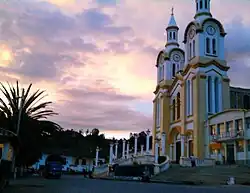 Church of Boavita | |
.svg.png.webp) Flag  Seal | |
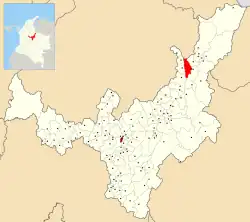 Location of the municipality and town of Boavita in the Boyacá department of Colombia | |
| Country | |
| Department | Boyacá Department |
| Province | Northern Boyacá Province |
| Founded | 9 February 1613 |
| Government | |
| • Mayor | Fabio Figueroa Jiménez (2020-2023) |
| Area | |
| • Municipality and town | 159 km2 (61 sq mi) |
| Elevation | 2,114 m (6,936 ft) |
| Population (2015) | |
| • Municipality and town | 7,079 |
| • Density | 45/km2 (120/sq mi) |
| • Urban | 2,929 |
| Time zone | UTC-5 (Colombia Standard Time) |
| Website | Official website |
Etymology
The name of Boavita is derived from Chibcha and doesn't mean "good life", yet "Point on the hill worshipping the Sun" or "Gate of the Sun".[1][2]
History
The area of modern Boavita in the times before the Spanish conquest of the Muisca was inhabited by a tribe called "Guavitas", pertaining to the Laches and Muisca. It was ruled by a cacique who was loyal to the Tundama of Tundama.[1]
Modern Boavita was founded on February 9, 1613, by Sr. Hugarte.[1]
Economy
Main economical activities of Boavita are agriculture, livestock farming and mining. Main agricultural products cultivated are dates, sugarcane, yuca, coffee, cotton, potatoes, maize, chick peas, beans, peas, wheat and arracacha. The mining activities exist of carbon exploitation.[1]
Gallery
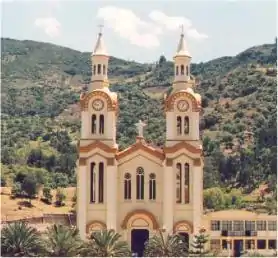 Church of Boavita
Church of Boavita Church with Christmas
Church with Christmas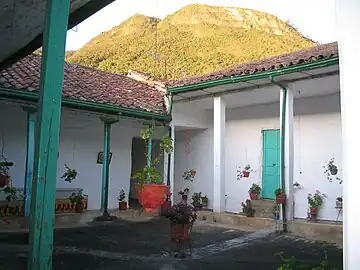 Colonial house
Colonial house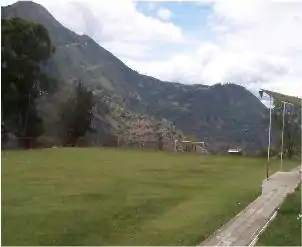 Outside the urban centre
Outside the urban centre
References
- (in Spanish) Official website Boavita
- (in Spanish) Etymology Boavita - Excelsio.net
